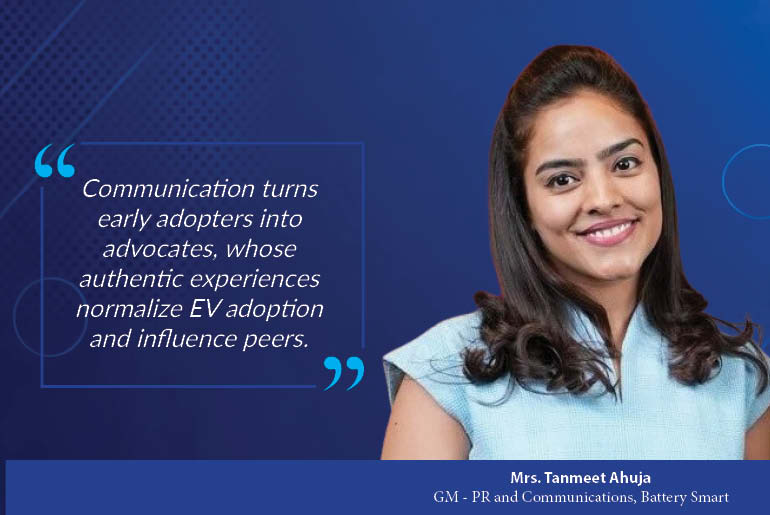India’s electric vehicle (EV) ecosystem is at an inflection point. Sales of electric two- and three-wheelers have surged over 60% year-on-year, battery-swapping and charging networks are expanding rapidly, and EV fleets are powering last-mile logistics. Yet, despite these achievements, misconceptions persist. Many still assume EVs are unreliable in Indian conditions, expensive, or difficult to operate.
As communicators, we sit at the intersection of technology and understanding, translating complex topics like EVs, energy storage, grid management, and charging systems into narratives people can understand and trust. Our responsibility is to bridge the gap between emerging technology and societal trust—and most importantly, to debunk myths that hinder adoption.
Tackling Perception with authentic narratives and storytelling
It’s worth highlighting that in India, Battery Smart’s network has facilitated over 90 million battery swaps across 1,500+ stations for 90,000+ active drivers, who rely on instant battery exchanges instead of long multi-hour charging waits. This real-world data dispels common myths such as “range anxiety” and “limited charging infrastructure”, while removing upfront battery costs. It demonstrates that reliable, scalable EV mobility is not a distant vision—it’s already happening.
- Cost perception is another common barrier. While upfront EV prices can appear higher, the total cost of ownership often tells a different story. Drivers using battery swapping can save 40–50% in energy and maintenance costs compared to conventional vehicles. By sharing real, quantifiable savings and earnings examples, communicators make these benefits relatable, moving beyond abstract numbers.
- Safety concerns, particularly around EVs or batteries—remain a common point of hesitation. Modern battery-swapping & charging stations incorporate IoT-driven monitoring, predictive maintenance, and standardized safety checks at every step. Communicators translate these technical safeguards into stories that resonate with users: real experiences, clear processes, and tech upgrades. Sharing operational metrics, uptime statistics, and user testimonials makes these advantages tangible and builds credibility among potential adopters, policymakers, and media alike.
Why Do These Myths Persist?
Many consumers lack first-hand EV experience, often relying on outdated lead-acid technologies or early product failures. Viral videos of isolated battery incidents further skew perception, while the technical complexity of batteries—chemistry, charging curves, and management systems—can intimidate users. Communicators play a critical role in simplifying technical realities, emphasizing credible data, simplifying information and fostering trust.
Building Trust Through Transparency
Trust thrives on openness. Communicators must tackle tough questions on safety, recycling, and power reliability using verified data, field insights, authorised third-party validation and driver success stories that help dismantle fear.
The Shift from Awareness to Advocacy
No single stakeholder can shift public perception alone. Industry communicators must collaborate with government bodies, OEMs, and environmental experts, ensuring consistent, fact-based messaging. Amplifying these messages through journalists, educators, digital creators help extend credibility and reach.
The most effective myth-busters aren’t campaigns—they’re consumers themselves. A story of higher earnings due to zero downtime resonates more than any advertisement. Communication turns early adopters into advocates, whose authentic experiences normalize EV adoption and influence peers. Community networks amplify these voices, converting individual wins into collective momentum.
Looking Ahead
As India accelerates toward its 2030 electrification goals, communicators must evolve from informers to enablers of trust. Communicators must become catalysts of trust — translating technology into belief, and awareness into action. Because every myth dismantled, every truth amplified, brings India a step closer to energy independence and cleaner cities. In that journey, communication isn’t support — it’s strategy.

